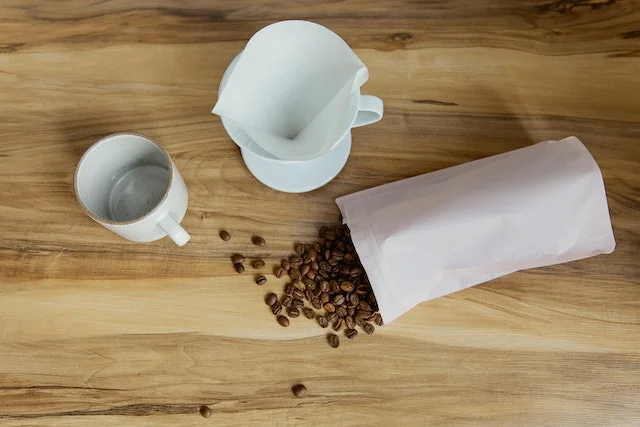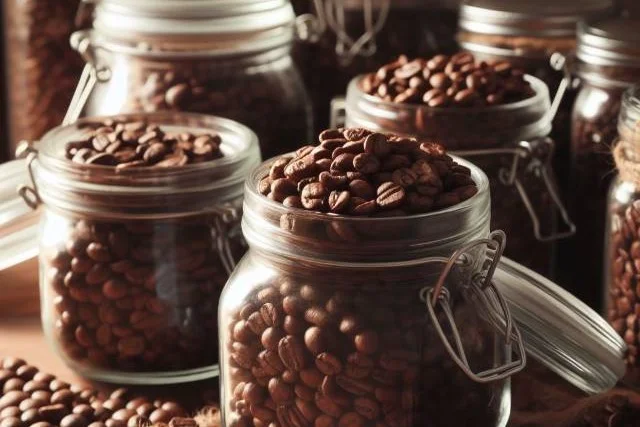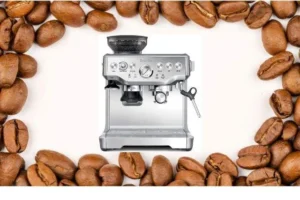Savor the Flavor: Best Practices for Coffee Bean Storage Solutions
Proper storage is essential for maintaining the freshness and flavor of coffee beans allowing you you to get a lot more from your espressos, lattes, and cappuccinos for longer. . With the wide variety of storage options available, choosing the optimal method can be confusing. Keep reading to learn about all aspects of coffee bean storage solutions and to get ideas that provide actionable solutions for keeping your coffee tasting its best.
Coffee Bean Storage Solutions Key Takeaways
- Proper Coffee Bean Storage: Preserving freshness and flavor is crucial. It depends on factors like light, temperature, humidity, and oxygen.
- Key Coffee Storage Factors: Light, temperature, humidity, and oxygen significantly affect coffee bean shelf life.
- Container Options: Consider Airscape, vacuum-sealed bags, mason jars, or Mylar bags, each with its advantages and limitations.
- MECE Approach: To ensure freshness, select the right container, control temperature and humidity, and reduce oxygen exposure. Adapt your strategy based on storage duration.
The Importance of Proper Coffee Bean Storage

After roasting, coffee beans begin to slowly degrade in quality due to oxidation and the release of carbon dioxide gas. How beans are stored greatly impacts the speed of this process. Proper storage mitigates the staling effects and extends shelf life. The benefits of effective storage practices include:
- Preserving aromatic compounds and flavor nuances
- Maintaining peak smoothness and acidity/brightness
- Reducing bitterness and muddied flavors
- Allowing full expression of origin character
- Lengthening the drinkability window
On the other hand, improper storage accelerates deterioration and causes coffee to go flat and stale faster. Aromatic oils dissipate, acids break down, and overall quality fades. Taste defects emerge like cardboard, woody, and papery notes.
By employing proper storage, much of coffee’s subtle complexity and sweetness can be retained. This enables you to experience a coffee’s inherent characteristics and appreciate all the hard work put into the growing and roasting of the beans.
What Factors Affect Coffee Bean Storage
Many variables impact the lifespan of roasted coffee beans. To optimize storage, it is important to control these factors:
Light Exposure
Light, especially visible spectrum light, degrades coffee compounds very rapidly. Studies show that light exposure for as little as 10 hours accelerates staling and flavor loss.
Direct sunlight is most damaging, but indoor lighting also negatively affects beans over time. UV rays break down fats and oils while visible light damages other volatile aromatic compounds.
Temperature
Heat causes coffee beans to stale faster while cold temperatures slow down chemical reactions. The ideal range for whole bean storage is between 55°F to 75°F.
High heat above 80°F hastens degradation similar to light exposure. Freezing temperatures below 32°F damage cell structure through ice crystal formation.
Maintaining a stable, moderate temperature preserves freshness best. Fluctuations multiply staling effects.
Humidity
Moisture content directly impacts shelf life. Beans stored below 50% relative humidity lose volatile compounds faster as the drier environment accelerates oxidation and off-gassing.
Above 70% humidity risks mold growth. The optimal humidity range mirrors ideal temperatures: between 55% to 75%.
Oxygen and Airflow
Oxygen degradation is the biggest enemy of coffee bean freshness. After roasting, gases escape and interact with oxygen through off-gassing. Minimizing airflow around the beans decreases oxidation.
Vacuum sealing is best for preventing oxygen exposure. Where a vacuum is not possible, valved containers that allow gasses to vent while keeping oxygen out are recommended.
Container Selection
The container characteristics also factor into proper storage. The beans must be shielded from light, while the container should be food-safe, airtight, and sturdy. Storage containers should also be opaque and non-reactive.
Now that we have covered the essential factors, we can explore coffee bean storage methods and solutions in greater detail.
Mutually Exclusive Coffee Storage Solutions

When it comes to storing coffee beans, there are a few commonly used containers. Airscape, vacuum-sealed bags, mason jars, and mylar bags each have their own advantages and limitations. We’ll examine each method through the lens of being mutually exclusive – meaning each is fundamentally unique in its mechanism.
Airscape Containers
The Airscape is an innovative canister featuring a central plunger that pushes out nearly all the air when depressed. Beans are packed into the outer chamber around the plunger.
As the plunger moves down, the displaced air vents out through a one-way valve in the lid. This reduces oxygen exposure. The plunger then stays in place to minimize airspace.
Airscape containers excel at reducing oxygen through a patented plunger mechanism. But light exposure and small batches are limitations.
Vacuum-Sealed Bags
Vacuum sealers remove oxygen by sucking nearly all air out of bags containing coffee beans before heat sealing them shut. This prevents oxygen and moisture from reaching the beans.
Once sealed, the rigid bags provide an impenetrable barrier to gases. As long as the seal remains intact, no air or moisture can enter.
Vacuum sealing creates the optimal oxygen-free environment. But limitations like plastic contact and reusability should be considered.
Mason Jars
Beloved for home canning, mason jars have become a cult favorite for storing coffee beans. Their vintage appeal, versatility, and affordability make them a staple in many kitchens.
The lid seals against the rim of the glass jar to create an air and moisture-tight enclosure. Beans are packed directly into the jar volume with no airspace.
Mason jars feature air-tight construction but lack valves for releasing CO2 off-gassing. Their elegance comes with some fragility as well.

Mylar Bags
Most Mylar bags are paired with oxygen absorbers are a very common solution for coffee storage. Mylar is an extremely impermeable plastic film that blocks moisture, oxygen, and light.
Oxygen absorbers are added before sealing the bag. These absorb lingering oxygen and CO2 emissions during storage. Beans are protected in an inert gas environment.
Mylar bags offer unparalleled barrier properties but care must be taken to avoid bean damage and maintain seals. Reusability is also a concern.
Collectively Exhaustive Coffee Storage Methods
In addition to unique containers, proper temperature and humidity control is critical for storage. This can be achieved through collectively exhaustive means – refrigeration, freezing, and room temperature storage – each able to fully address environmental control.
Refrigeration
Simply placing coffee beans in an airtight container in the refrigerator can prolong freshness. The cold 33°F to 40°F temperature significantly slows down the chemical reactions degrading flavor compounds.
For best results, beans should be allowed to de-gas for 24 hours before refrigerating. Otherwise, the chilled temperature interferes with off-gassing, trapping carbon dioxide within the beans.
Pros
- Slows down staling reactions
- Easy to implement with any container
- Allows small batch storage
Cons
- Below 55°F risks flavor loss
- Leads to moisture condensation
- Exposes beans to food odors
- Thermal shock if beans fluctuate to room temperature
Refrigeration can be effective for the short term but risks from condensation and temperature fluctuations limit this method.
Freezing
Storing coffee beans in the freezer is a popular tactic. The frozen environment at 0°F to 10°F essentially stops the progression of staling.
For freezing, beans must be vacuum-sealed or fully sealed in an airtight container with no gas pockets. This prevents freezer burn which damages cell structure.
Advantages
- Halts staling reactions
- Allows long-term storage up to 2 years
- Utilizes existing appliance
Disadvantages
- Ice crystals rupture cell walls
- Needs special freezer-safe packaging
- Exposes flavors to freezer odors
- Thermal shock brings back to room temperature
Freezing can provide long-term storage if beans are carefully packaged to avoid freezer burn. But thawing and condensation issues exist.
Room Temperature
Storing beans at room temperature between 60°F to 75°F preserves freshness when combined with proper packaging. This moderate stable temperature prevents thermal shock.
An airtight container with minimized oxygen exposure is required. If sealed effectively, beans store well for 4 weeks to 2 months before staling.
Benefits
- Maintains proper temperature
- Avoids condensation and moisture
- Allows smaller batches
- No thermal shock
Drawbacks
- Shorter shelf life of 1-2 months
- Requires excellent seal and no air gaps
- More susceptible to oxygen damage
Room temperature storage is convenient but has a shorter viability window. Excellent packaging is essential to limit oxygen exposure.
The MECE Approach to Coffee Bean Storage

Now that we have covered the unique containers and collective storage environments, we can outline a MECE (mutually exclusive, collectively exhaustive) framework for proper coffee bean storage.
Choosing the Right Container
| Container | Benefits | Drawbacks |
| Airscape | Reduces oxygen exposure | Plastic permeable to light |
| Mason Jar | Completely airtight | No gas release valve |
| Mylar Bags | Oxygen and moisture barrier | Can damage bean surfaces |
| Vacuum Sealed Bags | Removes nearly all oxygen | No reuse or recycling |
Select a container that aligns with your priorities like batch size, gas venting, and reusability.
Controlling Temperature and Humidity
| Method | Temperature Range | Impact on Freshness |
| Room | 60°F to 75°F | Maintains ideal temp, short duration |
| Refrigerated | 33°F to 40°F | Prolongs but risks condensation |
| Frozen | 0°F to 10°F | Halts staling but damages cell structure |
Choose an environment that best matches storage duration: short-term room temp or long-term frozen.
Reducing Oxygen Exposure
- Consider vacuum sealing for zero oxygen
- Use valve containers to vent gases while sealing out air
- Add oxygen absorbers to bags to remove the remaining oxygen
- Avoid re-exposing beans to oxygen after opening the storage
With a MECE approach covering containers, temperatures, and oxygen, an effective storage solution can be crafted. Now we dive deeper into specific methods.
Coffee Storage Solutions: Airscape Containers
The Airscape container is one of the more technologically advanced options. Through a patented plunger mechanism, it reduces oxygen exposure to extend shelf life.
How Airscape Containers Work
Airscape containers are shaped like cylinders. The inner chamber holds the coffee beans around a central plunger.
To operate, you fill beans in the chamber and fully depress the plunger. This forces air out of the container through a one-way valve lid.
The plunger stays lowered, taking up space to minimize air remaining around the beans. Airtight seals retain the oxygen-reduced environment.
Airscape offers acrylic and stainless steel models. The acrylic blocks UV light for better preservation.
Advantages of Airscape Containers
- Oxygen Reduction: Depressing the plunger extracts over 90% of air from the chamber. With less oxygen, oxidation reactions are greatly reduced to keep beans fresher.
- Small Footprint: The narrow cylinder shape allows efficient storage in pantries and cabinets. Different sizes accommodate batches from 0.5 to 2.5 pounds.
- Gas Release: Carbon dioxide emitted from the beans vents out through the lid valve. This prevents the buildup of gases which can cause staleness.
- Reusability: As a durable plastic or stainless container, the Airscape can be used indefinitely for storing new batches.
Disadvantages of Airscape Containers
- Manual Operation: The plunger must be pressed down each time you access beans, re-exposing them briefly to oxygen. Frequent opening accelerates staling.
- Light Exposure: The plastic container allows some visible spectrum light through. For prolonged storage, acrylic or opaque models are better.
- Limited Capacity: The smaller footprint means Airscapes only hold 1 to 2 pounds of beans. Larger batches require multiple units.
- Cost: Ranging from $20-$35 per container, Airscapes have a higher unit cost than simple mason jars or mylar bags.
With its sleek design and oxygen-reducing mechanism, Airscape containers provide an efficient storage solution. Their limitations come down to handling, light protection, capacity, and cost.
Coffee Storage Solutions: Vacuum-Sealed Bags
Vacuum-sealing coffee beans in bags is a fast, zero-oxygen method utilized by many coffee companies. This process extracts nearly all oxygen before hermetically sealing the bag.
Benefits of Vacuum Sealing Coffee
- Zero Oxygen: Vacuum sealing removes 98-99% of oxygen from the bag prior to heat sealing. This eliminates oxygen degradation, the biggest factor in coffee staling.
- Humidity Control: The sealed environment maintains the same humidity level from the time of packaging. No moisture can enter or exit.
- Large Batch Size: Vacuum bags are available in sizes ranging from 1 pound to 5+ pounds to accommodate your coffee storage needs.
- Inexpensive: Plain vacuum sealing bags cost around 2-4 cents each. A low-cost investment for storing home-roasted or purchased beans.
Limitations of Vacuum Sealing Coffee
- Requires Equipment: You need a dedicated vacuum sealer appliance to properly remove oxygen and seal the bags. These cost $40 and up.
- Plastic Contact: Beans come directly in contact with the plastic bag material. Some compounds may be absorbed into the grounds.
- One-Time Use: Once opened, bags lose the vacuum seal and allow oxygen back in. Not reusable.
- Off-Gassing: No valve on the bag allows built-up CO2 to escape. Gas buildup can cause staleness.
Overall vacuum sealing delivers unbeatable oxygen removal. Home users just need the right equipment and will sacrifice reusability.
Coffee Storage Solutions: Mason Jars
Beloved for home canning, mason jars have become a popular vessel for storing coffee beans. Their vintage charm and versatility make them a kitchen staple.
Why Mason Jars Work for Coffee
- Airtight Seal: The threaded metal lid forms a tight compression seal against the rim of the glass jar. No air or moisture can enter when properly closed.
- Reusable: Jars can be used indefinitely for coffee storage. Lids may need occasional replacement over time.
- Any Size Batch: Wide-mouth quart jars can hold 1 pound while half-gallon jars store over 5 pounds. Use the size that matches your needs.
- Odor-Proof: The glass jar and metal lid block any odors from entering or escaping. A key factor for pantry storage.
- Light-Proof: No light can pass through the glass jar material. Beans stay protected from photodegradation.
Limitations of Mason Jars
- No Degassing Valve: Built-up CO2 needs to vent to prevent staleness. Opening the jar periodically releases gas but allows oxygen back in.
- Fragile: Glass jars can shatter if dropped. The glass also chips and cracks over repeated use.
- Metal Lid Reactions: Coffee oils may absorb metal odors and flavors from the steel lid over time. Use buffered lids.
- Loosening Seal: The sealing rim may bend slightly after repeated opening. This reduces its airtight seal.
With their vintage appeal and airtight seal, mason jars offer an elegant storage solution. Their lack of a degassing valve and fragility are limitations to factor in.

Coffee Storage Solutions: Mylar Bags
Mylar bags are a very popular choice for commercial coffee packaging and home storage. When used properly, these bags provide an excellent oxygen and moisture barrier.
Key Properties
- Impermeable Material: Mylar is an extremely impervious plastic film made from polyethylene terephthalate (PET). No gases or moisture can permeate through intact Mylar.
- Oxygen Absorbers: Small packets placed in mylar bags adsorb remaining oxygen and CO2 emissions. This maintains an inert nitrogen environment.
- Blocks Light: No visible or UV light can penetrate the opaque silver material. Beans avoid light-induced degradation.
- Strong Seal: Once sealed, the multilayer construction prevents gases from entering. Puncture is the only risk.
Considerations
- Potential Bean Damage: Static charge and surface adhesion can pull bean oils into the bag material, damaging flavor. Use extra caution.
- Requires Oxygen Absorbers: Mylar alone cannot remove enough existing oxygen. You must add absorbers to make the environment inert.
- Permanent Seal: Once sealed, Mylar bags cannot be easily opened and re-sealed. The closure is a one-time use.
- Puncture Risks Seal: Any small holes immediately compromise the oxygen barrier. Ensure no sharp objects can pierce the bag.
With proper handling, Mylar bags can provide long-term storage. However limitations exist around seal integrity, bean damage, and reusability.
Temperature and Humidity Control
In addition to the container itself, proper temperature and humidity levels are vital for preserving beans.
Ideal Coffee Storage Temperature
The best temperature range for stored coffee is 55°F to 75°F. At these moderate room-like temperatures, the staling reactions are slowed down significantly compared to hotter temperatures.
- Keeping beans consistently below 55°F risks condensation issues as well as freezing damage at very cold temperatures.
- Temperatures above 75°F accelerate the deterioration of aromatic compounds, increasing staleness.
Fluctuating temperatures also degrade coffee more rapidly than a stable environment. Try to maintain as consistent a temperature as possible.
Managing Humidity
The ideal humidity range mirrors ideal temperatures: between 55% to 75% RH. Too low below 50% RH causes beans to dry out and go stale faster. The optimal humidity preserves bean integrity.
Humidity above 70% risks mold growth which can impart musty flavors. If beans in naturally humid environments like cellars, the container seal and oxygen barriers become more critical.
Temperature and humidity work hand in hand. Use a container method that allows you to control both these factors based on your local environment.
Oxygen Exposure Reduction
Limiting oxygen exposure is crucial for maintaining freshness. Here are tips for achieving this:
The Role of Degassing
After roasting, coffee beans release large amounts of carbon dioxide gas for the first 24 hours. Allowing this to fully vent prevents pressure buildup.
Some storage containers like Airscape and mason jars should be degassed prior to sealing. For vacuum sealing, degassing is not needed since all gas is removed.
Sealing and Re-Sealing Containers
The seal integrity of the storage container is paramount. Any air gaps or leaks allow oxygen to enter.
When reopening containers, limit exposure time. Purge containers with nitrogen gas if possible before resealing to displace oxygen.
Oxygen Absorbers
For bags, add oxygen absorber packets to adsorb remaining oxygen and ongoing CO2 outgassing.
Use the proper quantity of absorbers – excessive amounts can make the environment too dry. Follow package directions.
Preventing oxygen exposure through careful degassing, sealing, and absorbing helps retain freshness.
Long-Term vs Short-Term Storage
The intended duration of storage – whether short-term just for a week or long-term for months – impacts what methods work best.
Short-Term Strategies
For coffee you plan to consume within a month, room temperature storage is often sufficient. Use an airtight container, allowing beans to de-gas for a day before sealing.
Mason jars or Airscape containers work well for 1-4 weeks. Just open periodically to allow CO2 release. Refrigeration can also prolong freshness short term.
Long-Term Tactics
If storing coffee for more than 1 month, consider freezer or Mylar bag storage. Freezing below 20°F halts staling for 6 months to a year for whole beans.
Properly sealed Mylar bags with oxygen absorbers create an inert environment good for many months. For both methods, double wrapping or bagging prevents freezer burn or punctures.
The ideal strategy aligns with your expected shelf life – short-term does not require the same level of oxygen removal as long-term storage spanning seasons.
Monitoring Coffee Freshness
During storage, it is important to monitor for signs of degradation and take corrective actions. Here are ways to check coffee beans during storage.
Signs of Coffee Deterioration
- Reduced aroma intensity
- Fading flavor, increase in blandness
- Color changes from tan/brown to dull gray
- Oil spots disappearing on beans
- Increased bitterness and acidic or papery taste
These traits indicate staling is progressing. The coffee may need to be consumed sooner before degradation advances further.
The Importance of Regular Checks
- Check beans visually every 1-2 weeks if possible. Look for any changes.
- Smell coffee every time you open the container. Note aroma drop-off.
- Brew test cups periodically to taste the freshness. Cup less frequently to avoid wasting beans.
Monitoring headspace gasses, bean appearance, aromatics, and occasional taste tests ensures you know the coffee’s condition and can adjust storage accordingly.
Being attentive through storage allows you to enjoy coffee at peak quality and switch methods or consume beans before excessive staling occurs.
Summary of Best Practices
Below is a recap of key learnings for storing coffee beans:
Mutually Exclusive Containers
- Airscape: Plunger removes oxygen, acrylic blocks light
- Mason Jars: Reusable glass with an airtight seal
- Mylar Bags: Impermeable with oxygen absorbers
- Vacuum Sealing: Zero oxygen environment
Collective Storage Environments
- Room Temperature – 60°F – 75°F preserves well short-term
- Refrigerated – 33°F – 40°F slows staling but risks condensation
- Frozen – 0°F – 10°F stops degradation but may damage bean cell structure
MECE Considerations
- Select a container compatible with the expected storage duration
- Control temperature and humidity levels based on the environment
- Reduce oxygen through sealing, absorbers, and preventing air gaps
Following proper storage practices allows you to enjoy fresh-tasting coffee for weeks or months after roasting.
Conclusion
Proper coffee bean storage is crucial for retaining the nuanced flavors and aromas that make high-quality coffee so enjoyable. This comprehensive guide explored the key factors that impact shelf life – light, temperature, humidity, oxygen – and mutually exclusive storage solutions like Airscape containers, mason jars, mylar bags, and vacuum sealing that address those variables.
Managing storage temperature collectively through room, refrigeration, or freezing methods was also covered. By applying a MECE approach, choosing suitable packaging aligned with the expected duration, controlling the environment, and limiting oxygen exposure, you can fully preserve your coffee’s inherent character and complexity.
Ultimately, keeping beans fresh allows the subtle tastes that arise from terroir, processing, and roasting expertise to shine through. So follow these tips and best practices for storage that deliver delicious, optimally flavorful coffee every time you brew. The information provided empower you to retain nuanced coffee flavors.
Coffee Bean Storage Solutions Frequently Asked Questions
Properly stored beans can remain fresh for 1-2 months at room temperature, 6 months refrigerated, and 1 year or more frozen. The frame varies based on the storage method.
Yes, studies demonstrate visible and UV light rapidly degrades coffee compounds in as little as 10 hours. Therefore, use opaque, light-blocking containers.
Reusability depends on the container. Mason jars allow endless re-use while mylar and vacuum bags are single-use. With reusable vessels, take care to minimize oxygen exposure when opening.
Freezing stops staling reactions but you must use airtight, freezer-safe packaging to prevent absorbing flavors. Double bagging provides extra protection.
Visual inspections every 1-2 weeks let you spot signs of deterioration. Additionally, monitor aroma and do taste tests monthly to check freshness. This helps you consume beans while optimally fresh.








